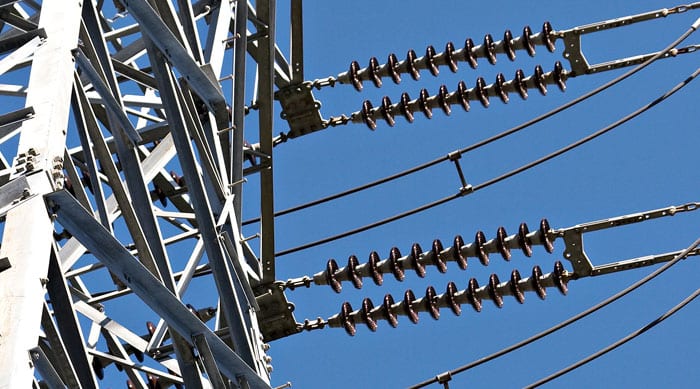The TSO/DSO divide: Facilitating co-ordination
The Energy Networks Association's David Smith reveals the co-ordinated transition to DSO will be its key focus over the coming years.
14th February 2017 by Networks

The call for evidence by BEIS/Ofgem on the future of smart power marked further progress in the development of the UK’s energy future and provided an opportunity for key industry parties to input their knowledge and experience.
Energy Networks Association (ENA), representing the transmission and distribution networks that will be vital in this transition, sent in a response that asserts our members’ common principles and puts the customer at the heart of future developments.
We have already seen how smart energy can benefit customers. Innovation in networks has allowed close to £1bn of cost savings for customers to be embedded in the current RIIO ED1 price control. A recent report commissioned by Ofgem also demonstrated that Low Carbon Network Fund projects could deliver significant benefits.
The outcomes from the call for evidence will need to address how the wider industry builds on this start and ensures developments unfold in a way that realises the full benefits of flexibility and continues to deliver best value for customers.
A key focus of ENA’s submission is the changing roles and responsibilities of network companies and the impact of that on the whole energy system. Our members recognise that the traditional role of network operators will continue to develop if customers are to get the most out of flexible energy and that this will require collaboration and a whole-system approach.
The move towards distribution system operators (DSOs), with distribution companies taking on more system operator functions, has already started to play a role in managing networks and this will become increasingly important. DNOs have adapted effectively to deal with the challenges of a rapid increase in distributed generation, and now need to scale up capability and capacity to enable a full DSO transition.
The DSO trend will have an impact across the energy system and require closer working and greater co-ordination between network operators. In recognition of this, ENA has launched a TSO-DSO project to bring network operators and key stakeholders together to explore some of the detailed challenges of evolving roles and responsibilities.
This project will co-ordinate the development of processes, roles and responsibilities to help identify and implement the best models. It will address operational issues caused by an increasing amount of energy flowing back onto the distribution network and being exported onto the transmission network.
Several development areas and work streams will form part of the TSO-DSO project, including the need to align regulatory incentives to deliver whole-system benefits and ensure a fair and consistent framework for all flexibility providers.
Improving the transparency of planned and anticipated contracted actions between customers, market participants and network operators will facilitate markets that provide solutions in a whole-system view. The project will also consider how better long-term forecasting of load and generation growth and a joined-up approach will help to meet future challenges in a rapidly changing market.
The work announced in ENA’s response to the call for evidence will take a whole-system approach with a strong focus on the interests of the customer rather than specific technologies or existing processes and structures. As the representative of both electricity and gas networks, ENA is well placed to consider energy challenges from a whole-system perspective, and to look across the power, heat and transport sectors. While the joint call for evidence focused on implications for the electricity networks, BEIS and Ofgem need to recognise the implications for gas transmission and distribution too. Virtually every major policy decision on power, heat and transport affects both energy vectors. Gas too has a full role to play in a smart energy future.
Through the TSO-DSO project, network companies will seek a better understanding of customer needs to help develop and provide services. The roles that will be defined and progressed will ensure that network operators continue to deliver safe and reliable networks that provide value for money and efficient access for customers in a flexible, decentralised energy future.
Read more about the project here.
Comments
Login on register to comment
Related content

Gas
Cadent backs launch of major bio-CNG HGV refuelling station
Gas network’s £250,000 infrastructure investment ensures supplies to existing connected customers have not been impacted

Gas
Editor’s blog: The biggest tests of resilience are yet to come
Network content director Jane Gray reflects on the industry's coronavirus response to date and the challenges still to come.

Gas
From the front line: Chris Garside and Andy Simcoe, Northern Gas Networks
Key workers across the power and gas networks are playing a critical role in the national response to Coronavirus. Network has committed to profiling their stories.
Related supplier content
![‘Learning by doing’ on the road to net zero [test product]](https://networksonline.s3.amazonaws.com/products/images/3.jpg)
People & Skills
‘Learning by doing’ on the road to net zero [test product]
DSO director Andrew Roper discusses 'Learning by doing'

Power
Load patterns and lockdown: how Covid-19 is impacting electricity networks
Insights into dynamics on the low voltage network as the outbreak unfolds

Heat
How E.ON. is helping the City of London become a zero emissions city
Discover Citigen. Deep in the heart of our bustling capital